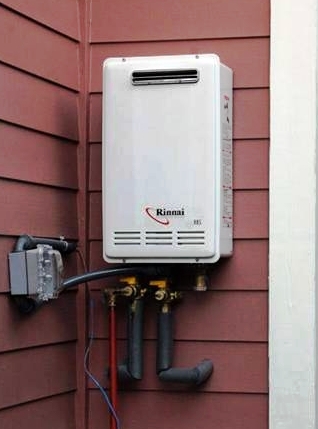
Heating water accounts for up to 30 percent of the average home’s energy budget. Some makers of gas-fired tankless water heaters claim their products can cut your energy costs up to half over regular storage heaters. So is it time to switch?
Probably not. Gas tankless water heaters, which use high-powered burners to quickly heat water as it runs through a heat exchanger, were 22 percent more energy efficient on average than the gas-fired storage-tank models in our tests. That translates into a savings of around $70 to $80 per year, based on 2008 national energy costs. But because they cost much more than storage water heaters, it can take up to 22 years to break even—longer than the 20-year life of many models.
With the help of an outside lab, Takagi and Noritz gas-fired tankless water heaters were pitted against three storage water heaters. Tests simulated daily use of 76 to 78 gallons of hot water. That’s the equivalent of taking three showers, washing one laundry load, running the dishwasher once (six cycles), and turning on the faucet nine times, for a total of 19 draws. While that’s considered heavy use compared with the standard Department of Energy test, this test more accurately represents an average family’s habits. More than 45,000 gallons of very hard water through a tanked model and a Rinnai tankless model to simulate about 11 years of regular use.
Results:
Manufacturers of tankless water heaters are fond of touting their products’ ability to provide an endless amount of hot water. But inconsistent water temperatures were a common complaint among poll respondents. When you turn on the faucet, tankless models feed in some cold water to gauge how big a temperature rise is needed. If there’s cool water lingering in your pipes, you’ll receive a momentary “cold-water sandwich” between the old and new hot water. And a tankless water heater’s burner might not ignite when you try to get just a trickle of hot water for, say, shaving. Nor do tankless water heaters deliver hot water instantaneously. It takes time to heat the water to the target temperature, and just like storage water heaters, any cold water in the pipes needs to be pushed out. And tankless models’ electric controls mean you’ll also lose hot water during a power outage.
Up-front costs are high. The tankless water heaters tested cost $800 to $1,150, compared with $300 to $480 for the regular storage-tank types. Tankless models need electrical outlets for their fan and electronics, upgraded gas pipes, and a new ventilation system. That can bring average installation costs to $1,200 to $2,500.00 compared with $300 for storage-tank models.
Tankless units might need more care. During long-term testing, an indicator on the tankless model warned of scale buildup. You might pay $300 for special valves and a plumber to flush out the water heater with vinegar. Many industry pros recommend that tankless models be serviced once a year by a qualified technician. Calcium buildup can decrease efficiency, restrict water flow, and damage tankless models. Experts suggest installing a water softener if your water hardness is above 11 grains per gallon. Ignoring this advice can shorten your warranty.
Buying a conventional storage water heater with a 9- or 12-year warranty makes more economical sense than a tankless water heater in most cases.
NOTE: If you have a gas water heater, install a water heater timer. This will extend the life of your water heater and save money on operating costs. Go to www.gaswaterheatertimer.com to learn more or contact.
Resources:
Consumer Reports

4 Comments